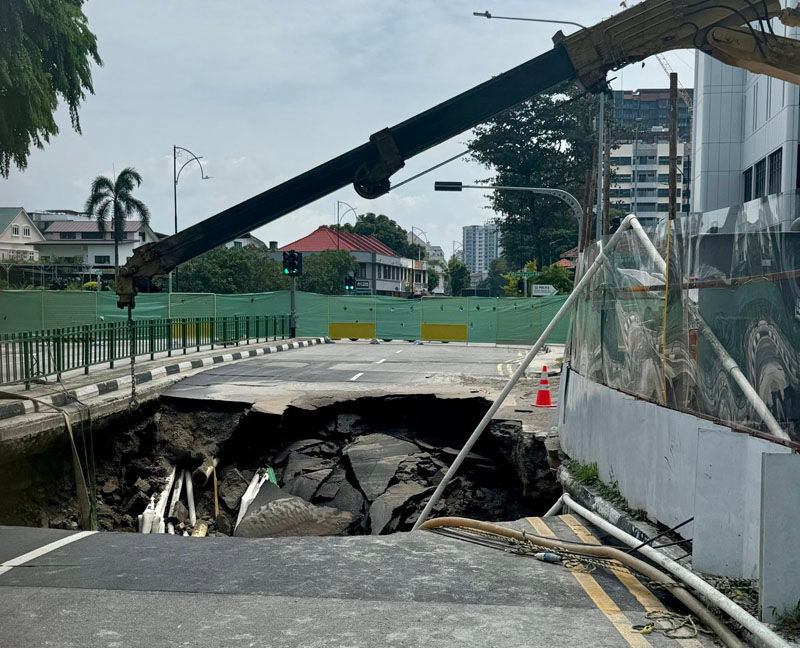What Are Sinkholes and Is It Normal for the Ground to Collapse?
- circular connection
- Jul 26
- 3 min read
Updated: Oct 28
A sudden road collapse on Tanjong Katong Road has raised fresh questions about what causes sinkholes, how they form, and whether Singapore’s ongoing construction boom in a land-scarce environment is putting more pressure on underground infrastructure.

Sinkhole in Singapore | Image: Social Media/unknown
What Is a Sinkhole?

Image: Flickr
A sinkhole is a hole or depression in the ground that forms when the surface layer collapses into a space beneath. This usually happens when underground rock such as limestone or gypsum is slowly dissolved by water. Over time, the rock gives way, leaving a hidden void. When the ground above can no longer hold its own weight, it collapses.
Sinkholes can be small and shallow or large enough to swallow vehicles and buildings. Some appear gradually, while others form without warning.
Why Do Sinkholes Happen?

Image: Advanced Geosciences Inc
Sinkholes can be triggered by both natural processes and human activities. Natural causes include the gradual dissolution of underground rock layers by acidic water, leading to the formation of voids. When these voids reach a critical size and can no longer support the weight of the soil, rock, and structures above, a sinkhole can form. In some cases, heavy rainfall, floods, or changes in the water table can accelerate this process.
Human activities, such as excessive groundwater pumping, mining, construction, and broken water or sewer pipes, can also contribute to the formation of sinkholes. These activities can disturb the underground balance, causing voids to form or existing ones to expand, leading to a sudden collapse.
Is It Normal for the Ground to Collapse?

Image: Facebook/PUB, Singapore's National Water Agency
While sinkholes are a geological phenomenon, their sudden occurrence can be alarming and dangerous. It is not "normal" for the ground to collapse without warning, but it is a recognized risk in certain areas, especially those with soluble rock formations. Urban areas with extensive underground infrastructure are also susceptible, as aging pipes or tunnels can weaken the ground above.
Recent Incidents in Singapore and Malaysia
Another tragic example of a sinkhole occurred in Kuala Lumpur, Malaysia (23 Aug 2024), highlighting the unpredictability and danger of these events. An Indian woman was walking on a pavement in the city when, without warning, the ground beneath her feet gave way. The pavement collapsed, and she was swallowed by the sinkhole. Rescue efforts are still underway, with emergency teams working to locate and save the woman. This incident underscores the sudden and unpredictable nature of sinkholes and the importance of monitoring and maintaining urban infrastructure to prevent such occurrences.

Image: CNA/Fadza Ishak
In another incident, a large hole appeared in the same city after a drain reportedly collapsed (26 Aug 2024). The event draws attention to the potential vulnerabilities in urban infrastructure and the need for regular maintenance and monitoring to prevent such occurrences.
Sinkholes are a stark reminder of the dynamic and sometimes unstable nature of the Earth's surface. While they are a natural phenomenon or sometimes manmade, their impact can be devastating, especially in urban environments.
Final Thought
The sinkhole in Singapore on Tanjong Katong Road reminds us that even stable cities are not immune to ground collapse. While natural sinkholes are unlikely here, problems in pipes or drains can still lead to surface failures. Regular maintenance, early detection, and public awareness remain key to keeping our streets and homes safe.
First published: 28/08/2024
Last revised: 26/07/2025









